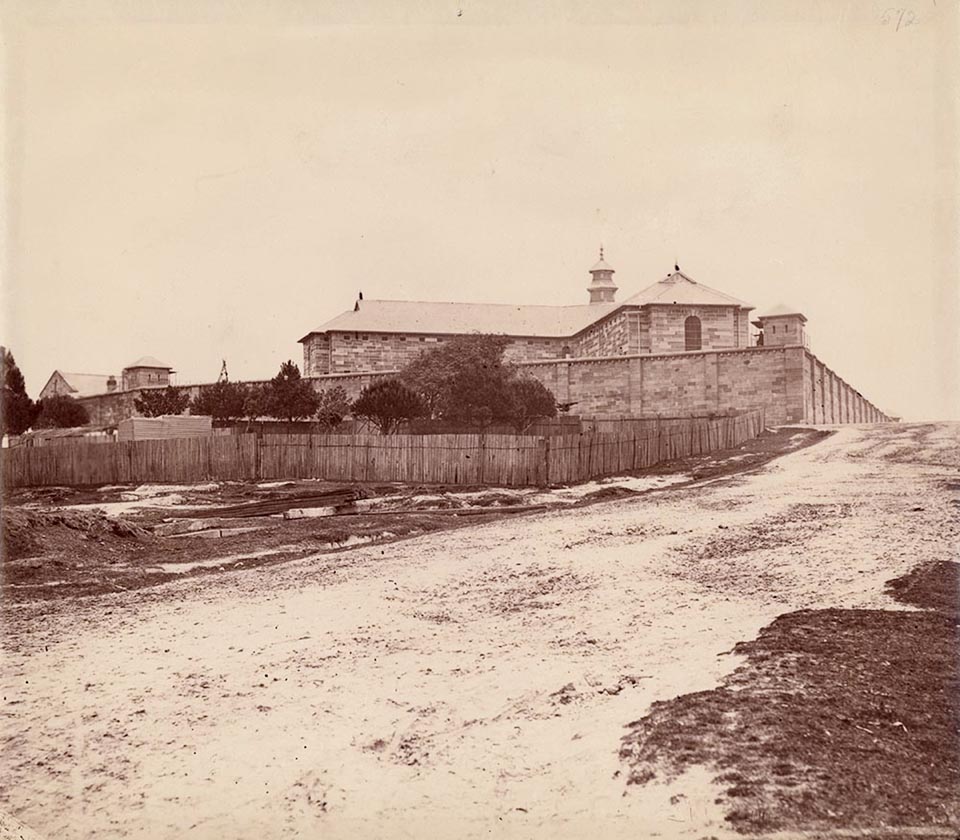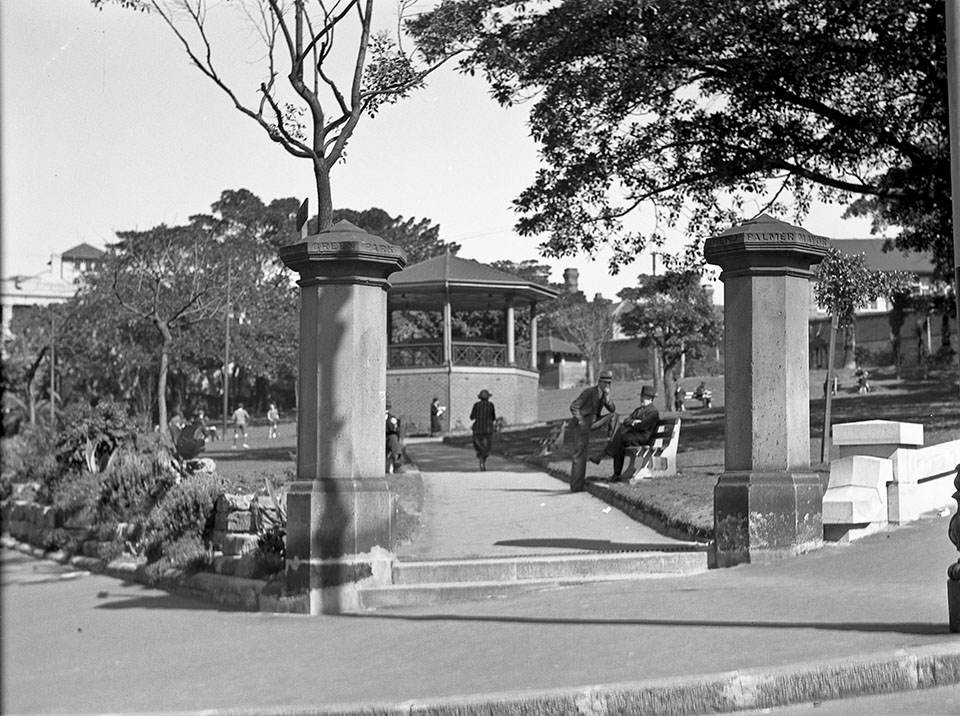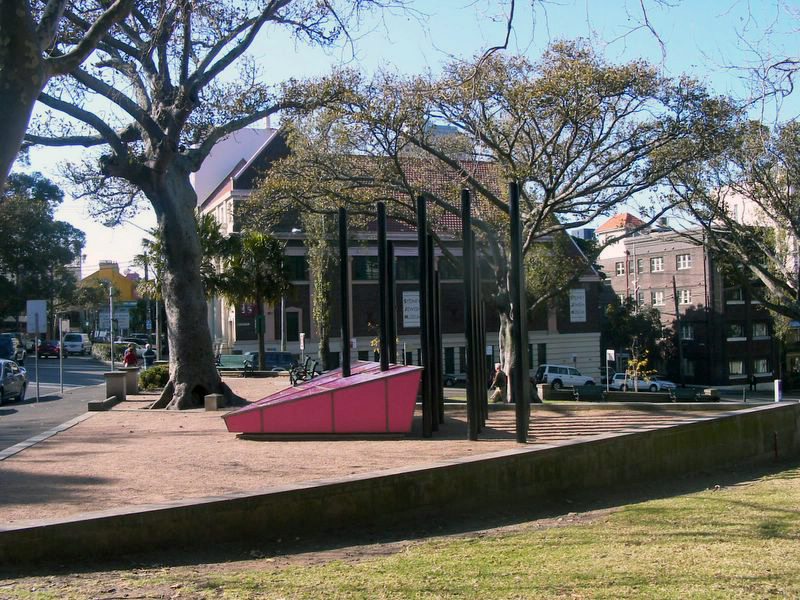The Dictionary of Sydney was archived in 2021.
Green Park
Citation
Persistent URL for this entry
To cite this entry in text
To cite this entry in a Wikipedia footnote citation
To cite this entry as a Wikipedia External link
Green Park
Green Park, [media]in Darlinghurst Road, was named after Alderman James Green, who represented the district from 1869 to 1883, although it is often thought that the park was named after Alexander Green, one of Sydney's most notorious hangmen, who lived in a whitewashed hut outside the eastern wall of nearby Darlinghurst Gaol, in what is now Green Park.
In [media]the 1860s the site was set aside for 'accommodation for aged and infirm females' but when these plans fell through, the site was given to the City Council in 1875 for a 'public recreation ground'. In the centre of the park is an ornate bandstand, erected in 1925 for concerts which were a common feature of the interwar years. A memorial to the surgeon Victor Chang, who performed Australia's first heart transplant at nearby St Vincent's Hospital in 1984, and died in a bungled extortion attempt in 1991, stood in the park for some years. It was later moved to the Victor Chang Cardiac Research Institute nearby.
The park [media]has also had a long significance for Sydney's gay community. The Gay and Lesbian Holocaust Memorial – a pink triangle with black poles – sits on the western side of the park, commemorating those lesbians and gay men who were killed by the Nazis during World War II. Gay Fair Days have been held there; the AIDS Memorial Candlelight Rally has started there; political demonstrations have been called there; public meetings have been held there to discuss issues of concern for the local gay community. One of Sydney's best-remembered gay restaurants, on Oxford Street, called itself the Green Park Diner so that it would attract a gay clientele. And one of the most sacred possessions of the Sydney chapter of the Sisters of Perpetual Indulgence is part of the urinal of the toilet that was located on the beat there, in Darlinghurst Road . Even though the toilet was demolished – and the urinal spirited away in the dark of night – the beat, as they say, goes on.
Sexual adventures [media]have always been part of Green Park and its history. Part of this unusual history has to do with Green Park's unique location; part of it has more to do with the social history of gay men's need in general to 'subvert' public space for their own purposes. This is true of where and how gay men could meet, particularly in the period before decriminalisation of homosexual acts in 1984. Denied the possibility of meeting other gay men openly at institutions commonly used by heterosexuals for such purposes – at work, at local churches or social clubs, at the P&C Association, at sporting or bridge clubs, for example – gay men found it necessary to use various public spaces to meet others. Thus parks, beaches, promenades, quiet bush walks, or open woodlands, known as beats in gay parlance, have all been used by gay men at some time or another as discreet places for meeting other gay men. Sexual access has often been an important purpose for such beats, but beats have always played an important role as mere meeting places for gay men, since legitimate commercial venues for meeting other gays have emerged only in the very recent past. And many such places were of dubious legality, and subject to police attention: we perhaps ought not enquire too closely about how they were able to continue to operate.
Thus, in Sydney, virtually any park (and in particular those in the inner-city area, where population densities are highest), has served, and in some cases, still does serve, as a beat. Green Park, and 'The Wall' – the stretch of Darlinghurst Road from Oxford Street to Burton Street – should be seen in this tradition. The location in Darlinghurst, between Kings Cross and Oxford Street, has meant that there have always been men walking back and forth between these two areas, both known for their nightlife. Indeed, it is this central location of the park, in a residential area with a high transient population, that has meant that Green Park has served as a focal point for men meeting men over much of the twentieth century.
References
Clive Faro, with Garry Wotherspoon, Street Seen: a history of Oxford Street, MUP, Melbourne, 2000.
Garry Wotherspoon, 'City of the Plain': history of a gay subculture, Hale and Iremonger, Sydney, 1991





